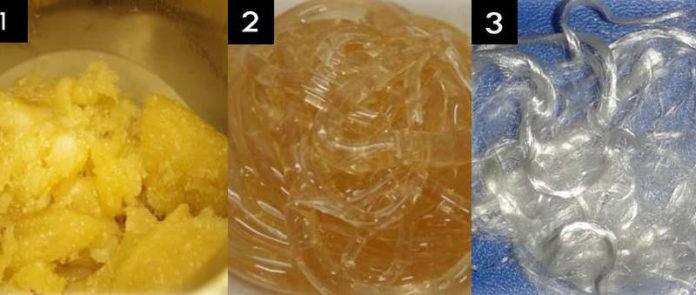People now are not interested in spending lots of money in expensive textiles. But, the fact is the poor-quality garments don’t last long. Most of the garments are end up in the landfills, where it degrades and release carbon dioxide, a major greenhouse gas.
Simone Haslinger said, “These are the big incentives to recycle clothes. Even some efforts, for instance, take-back programs are already taken underway. But the only small percentage of textile gets recycled. Other initiatives shred used clothing and incorporate the fibers into carpets or other products. But, this approach isn’t ideal since the carpets will ultimately end up in landfills, too.”
Many previous types of research have shown that the ionic liquid could efficiently melt cellulose. But the outcome couldn’t then be re-used to make new fibers. After that and almost 5 years before found an ionic liquid- 1,5-diazabicyclo that could potentially melt cellulose from wood pulp, that next be used to produce a material to spun into fiber. These fibers are stronger than commercially available viscose and feel alike lyocell.
By using this process, scientists wanted to see if they could apply the same ionic liquid to cotton-polyester blends. By doing this the properties of polyester and cellulose worked in their favor.
Haslinger said, “It allows us to dissolve the cotton into a cellulose solution without affecting the polyester.”
“Even, I could filter the polyester out after the cotton had dissolved. Then it was possible without any more processing steps to spin fibers out of the cellulose solution, which could then be used to make clothes.”
Research led, Herbert Sixta said, “We want to not only recycle garments, but we want to really produce the best possible textiles so that recycled fibers are even better than native fibers. But achieving this goal isn’t simple. Cotton and other fibers are often blended with polyester in fabrics such as “cotton-polyester blends,” which complicates processing.”
Now, scientists are struggling to bring their method closer to commercialization. In addition, the researchers are working to scale up the whole process and are investigating how to reuse dyes from discarded clothing.
Sixta noted, “We can handle the science, but we might not know what dye was used, for example, because it’s not labeled. You can’t just feed all the material into the same process. Industry and policymakers have to work on the logistics. With all the rubbish piling up, it is in everyone’s best interest to find a solution.”
